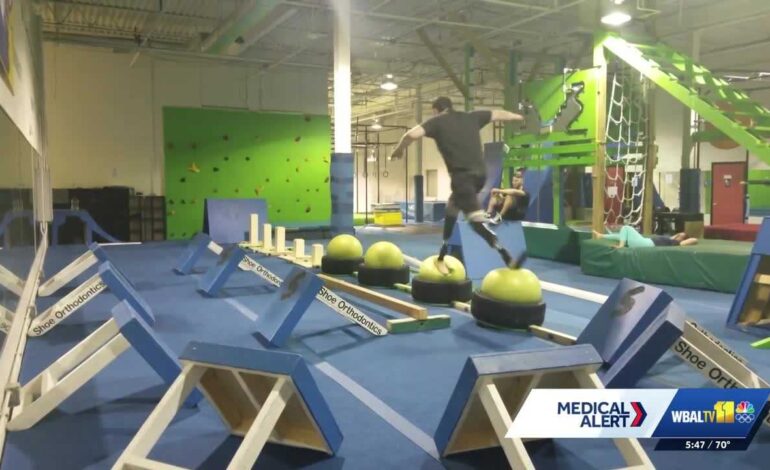Amputee Innovates Comfort in Prosthetics with Backward Feet

A remarkable breakthrough in prosthetic design has emerged from the experiences of Ross Holland, a 34-year-old amputee who has transformed his mobility by wearing his prosthetic feet backward. This unique approach has significantly improved his comfort and balance, allowing him to engage in daily activities without the need for a wheelchair.
Holland lost his legs at the age of three due to a lawn mower accident and has been navigating the challenges of prosthetics for over three decades. For much of that time, he struggled to find the right fit and comfort level. “To stay up in legs, I needed the fit to be exactly right,” he explained. “I spent a lot of time in the wheelchair, so I would go to work in the wheelchair and then when I got home, I would put my legs on and go to the gym and go out with friends.”
In a serendipitous moment, Holland began experimenting with the orientation of his prosthetic feet while climbing and navigating obstacles at his gym. This unconventional method led to a noticeable improvement in his balance and energy efficiency. “The balance was a lot easier, like physically easy, less energy to use to just do basic things,” he noted. Since making this adjustment, Holland has not used a wheelchair at all for the past three and a half years, allowing him to lead a more active lifestyle.
Collaboration with Experts
Eager to share his discovery, Holland partnered with his prosthetist and Dr. Scott Brown from the ABBEL Research Division at Sinai Hospital. Together, they initiated a study to examine the effectiveness of this backward-facing prosthetic design. “We were very much intrigued because he had come across a very novel approach to enhancing his ability to use his prosthetics,” Dr. Brown explained.
The research team conducted a gait analysis to assess the impact of the new orientation on Holland’s mobility. Dr. Brown noted that the change in foot position improved his posture and placement of his center of gravity. “It enabled him to use his muscles more efficiently, ultimately exerting less energy in performing activities,” he added. This initial research could pave the way for broader applications, potentially benefiting other amputees seeking improved mobility.
Aiming for Broader Impact
Holland’s journey to comfort and mobility has provided him with a newfound sense of independence. “I struggled for three decades to use my legs for a long time each day, and I’m still pinching myself in the morning when I wake up,” he said. His routine now includes wearing his prosthetics for up to 16 hours each day, culminating in a fulfilling lifestyle that he hopes can inspire others.
Looking ahead, Dr. Brown and his team plan to conduct a larger study involving more participants to assess whether Holland’s innovative approach could work for others. This research could open new avenues for the design and functionality of prosthetics, ultimately enhancing the quality of life for many amputees.
Holland’s experience serves as a testament to the power of creativity and collaboration in overcoming physical limitations. His hope is that sharing this unique approach will help others achieve greater comfort and mobility in their daily lives. Those interested in participating in future studies can find more information through the ABBEL Research Division.






